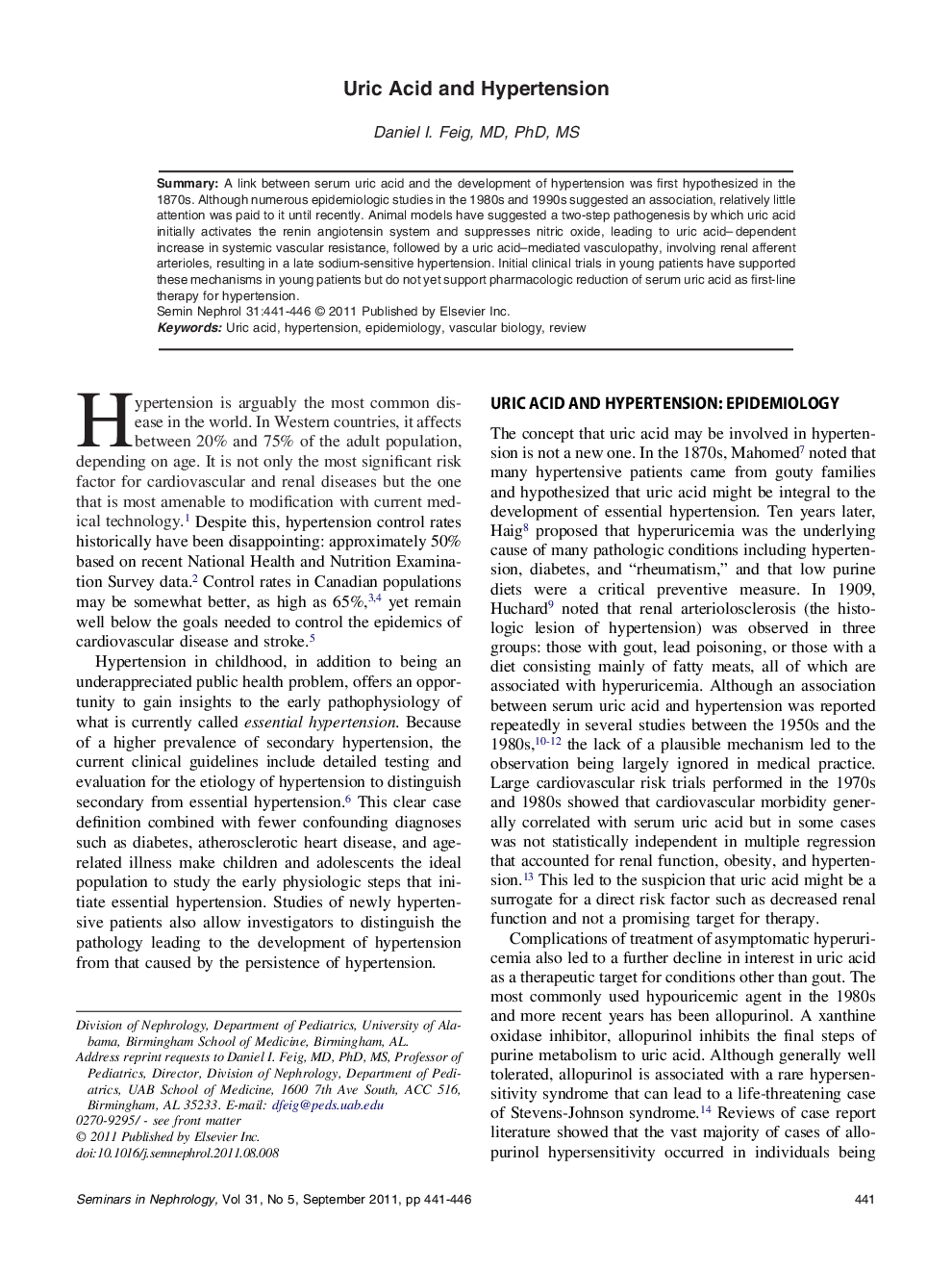| Article ID | Journal | Published Year | Pages | File Type |
|---|---|---|---|---|
| 3896686 | Seminars in Nephrology | 2011 | 6 Pages |
SummaryA link between serum uric acid and the development of hypertension was first hypothesized in the 1870s. Although numerous epidemiologic studies in the 1980s and 1990s suggested an association, relatively little attention was paid to it until recently. Animal models have suggested a two-step pathogenesis by which uric acid initially activates the renin angiotensin system and suppresses nitric oxide, leading to uric acid–dependent increase in systemic vascular resistance, followed by a uric acid–mediated vasculopathy, involving renal afferent arterioles, resulting in a late sodium-sensitive hypertension. Initial clinical trials in young patients have supported these mechanisms in young patients but do not yet support pharmacologic reduction of serum uric acid as first-line therapy for hypertension.
